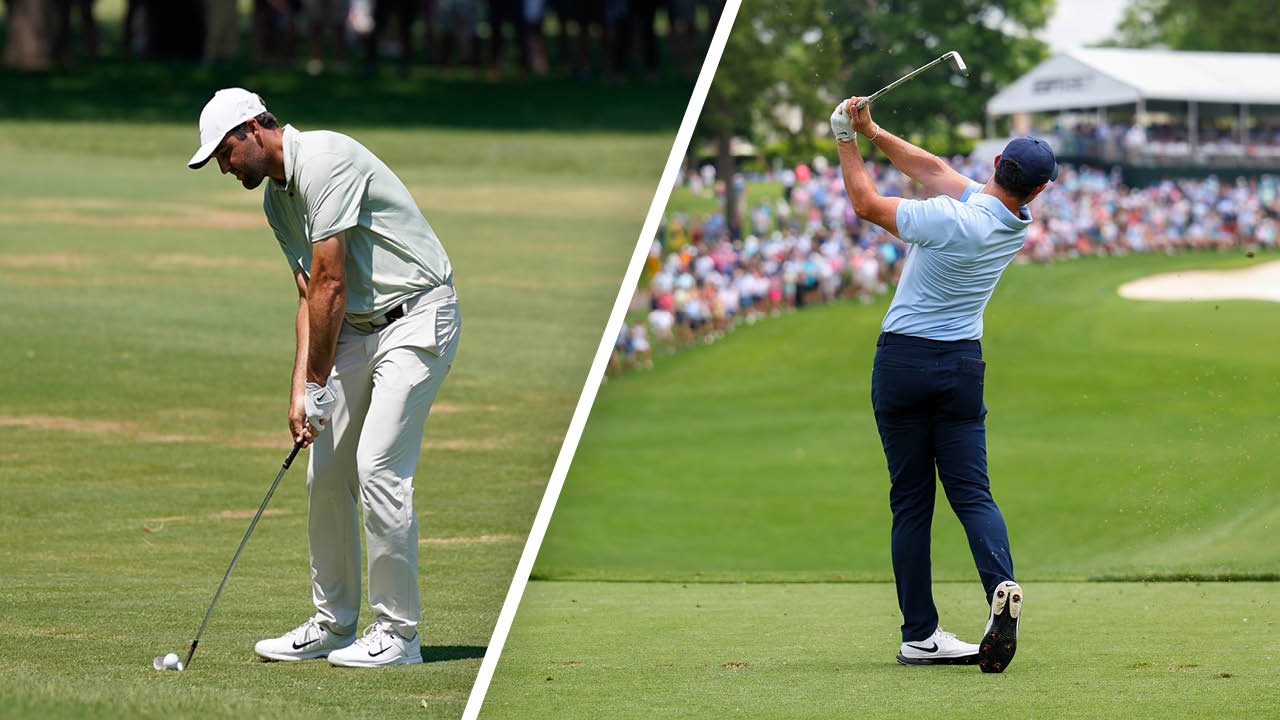
Regardless of your handicap and experience, checking your golf swing is something that all players should do regularly. Ensuring that the key fundamentals remain a priority, like having the perfect golf grip or the correct ball position every time, will help to maintain your consistency and give you the best chance of shooting lower scores.
In this article, Golf Monthly Top 50 Coach Alistair Davies shares five simple swing checks, as well as his expert tips, so that you can carry out your own golf swing MOT...
1. Rotate And Relocate: The Tailbone Drill
This is all about the rotation and extension of your body through impact and into the finish. Place an alignment stick through your belt pointing down to the ground. Your goal is to make sure you rotate and relocate by getting the stick past the ball’s address position in your finish.
This drill highlights how well the centre of your navel – your tailbone – is moving through impact and how well you are transferring your weight from trail side to lead side. If you move on to your back foot through the ball, the alignment stick won’t get past the ball’s address position – a tell-tale sign that you’re hanging back, maybe in an attempt to help the ball up.
2. Alignment: Empty Ear Process
Measuring how much you have to rotate your head to see the target is an easy way to self-check your alignment. Rotating your head as though you’re wanting to tip something out of your right ear gives you a better perception of where you’re actually aiming than simply looking over your shoulder.
Using this ‘empty ear process’ and rotating your head to check your alignment can highlight if your aim is out, as the amount of rotation needed will indicate whether you’re aiming too far right or left. If very little head movement is needed, you’re aiming too far left; if excessive head movement is required, you’re aiming too far right.

3. Correct Takeaway: Torch Beam Drill
In this takeaway drill, visualise a torch beam coming out of the butt end of your club. The beam should stay pointing at your belly button as you start the swing, rather than pointing to the target too soon via excessive early use of the wrists.
If the beam does point to the target too soon, you’ll be taking the club away on the inside too early. It will then either stay inside as you take it back, or your arms will pick the club up, causing your swing to become disconnected.
You’ll then have to make compensations elsewhere to hit the ball well, and while some players may be able to do this consistently, most can’t. Focus on this imaginary beam remaining pointed at your navel until the club is just past parallel on the way back.
4. Right Arm At Address: 'Give Blood' Position
When you give blood, the fold of your elbow points up. Think like this at set-up to help get your right arm sitting beneath your left arm better at address, which in turn allows you to fold the right arm correctly as you take the club back and get it on the correct plane.
If your right arm isn’t in the ‘give blood’ position, the tendency is to either pick the club up with your arms so things gets disconnected, or to use a lot of independent wrist action with the club getting too wrapped around you on the inside. So, think ‘give blood’ to help set things correctly at address and allow the trail arm to fold in the right way on the takeaway and backswing.

5. Hip Levels: Tilt To Turn Correctly
Many golfers set their right hip too high at address. When you start from this position, it’s hard to rotate your spine on the backswing – you’ll probably end up under-turning and swaying.
Set your left hip slightly higher than the right at address to allow your spine to sit correctly, so you can rotate and transfer your weight well in the backswing. This will then naturally lead into other good habits as your swing continues. It’s all about loading correctly. Use an alignment stick to check that your left hip sits slightly higher than your right at address.
Want To Read More Expert Golf Tips?
The Golf Monthly archive is a gold mine of brilliant reads, documenting a journey through the history of golf dating back to our first issue in 1911. Take advantage of over 100 years of invaluable tips from the best tour professionals and coaches in world golf, by subscribing to the online Golf Monthly Archive.







